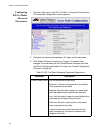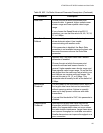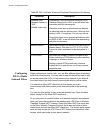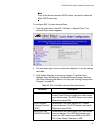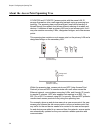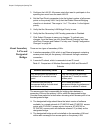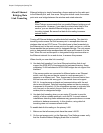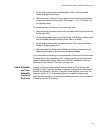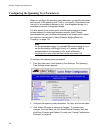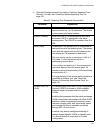
Chapter 5: Configuring the Spanning Tree
132
3. Configure the LAN ID. All access points that want to participate in the
spanning tree must have the same LAN ID.
4. Set the Root Priority parameter to be the highest number of all access
points on the primary LAN. Verify that the Enable Ethernet Bridging
check box is checked. The range is 1 to 7. The value 1 is the highest
priority.
5. Verify that the Secondary LAN Bridge Priority is zero.
6. Verify that the Secondary LAN Flooding parameter is Disabled.
7. Click Submit Changes to save your changes. To activate your
changes, from the menu bar click Save/Discard Changes, and then
click Save Changes and Reboot. For help, see “Saving Configuration
Changes” on page 46.
About Secondary
LANs and
Designated
Bridges
There are two types of secondary LANs:
A wireless secondary LAN, which is an Ethernet segment containing
access points that join the primary LAN network through a wireless
connection
A remote IP subnet, which is connected via an IP tunnel.
The access point that is responsible for bridging data between a
secondary LAN and the primary LAN is called the designated bridge.
Consider these selection criteria when choosing which access point to be
the designated bridge:
The designated bridge should have the latest version of software
available. In a mixed network of AT-WA7500 and AT-WA7501 access
points with AT-WL2411 access points, choose a AT-WA7500 or
AT-WA7501 access point with software release 2.2 (or later) as the
designated bridge.
The designated bridge must be installed on the secondary LAN and
within radio coverage of an access point on the primary LAN.
Table 41. Comparison of Wireless Secondary LANS and Remote IP
Subnets
Wireless Secondary LANs Remote IP Subnets
Any access point can provide a
wireless link to another access
point.
Only the root access point can
originate an IP tunnel to another
access point.
A wireless link provides a
transparent bridge for both wired
and wireless devices.
An IP tunnel provides a
transparent bridge for wireless end
devices on a remote IP subnet.



